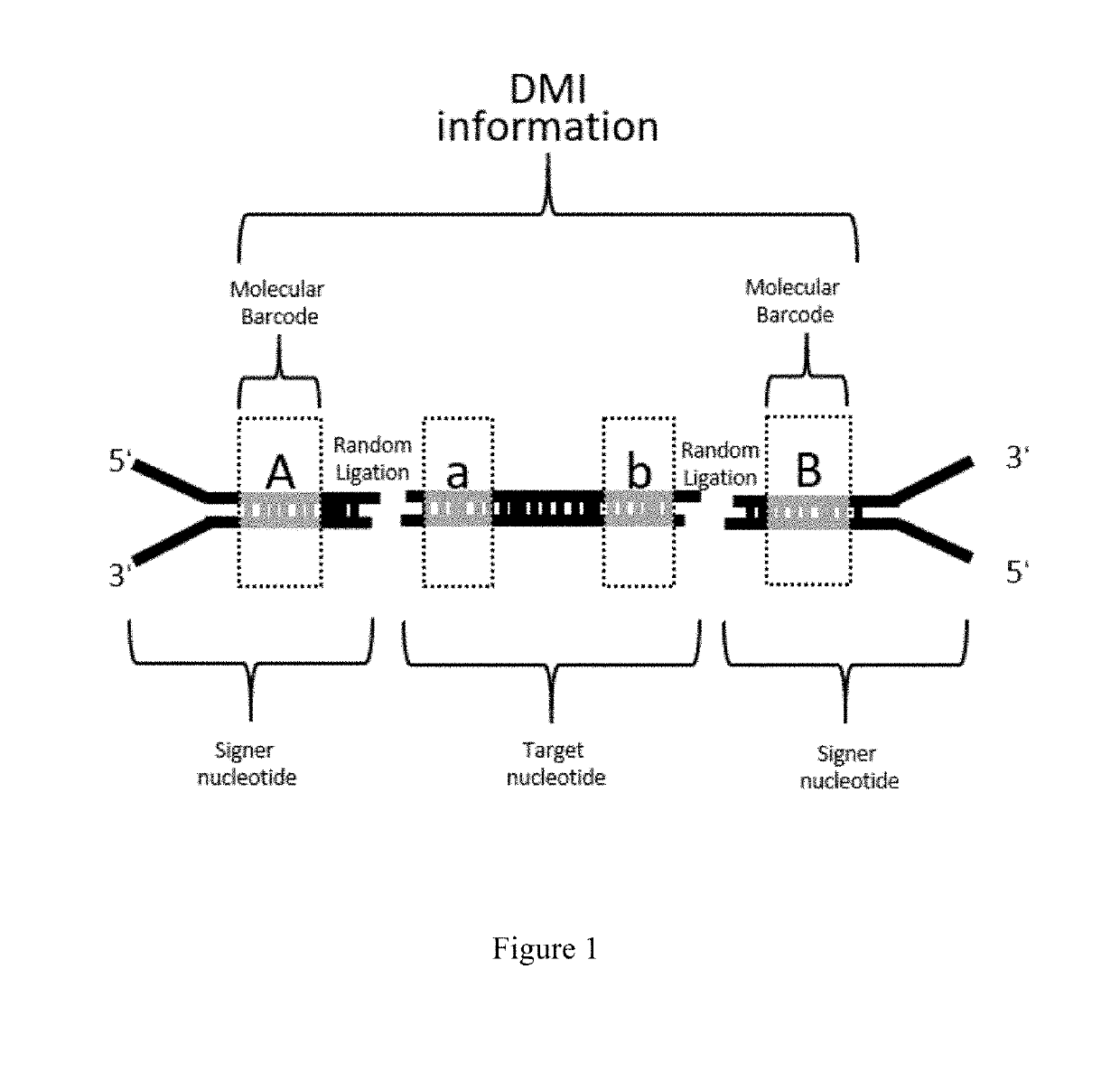Methods of reducing errors in deep sequencing
- Summary
- Abstract
- Description
- Claims
- Application Information
AI Technical Summary
Benefits of technology
Problems solved by technology
Method used
Image
Examples
example 1
Generation of Signer Nucleotides, DMI and Their Use in Sequencing Double Stranded Target DNA
Material and Methods
[0082]Oligonucleotides were from IDT and were ordered as PAGE purified. Klenow exo-was from NEB. T4 ligase was from Enzymatics. DNA: Multiplex I cfDNA Reference Standard were purchased from Horizon.
[0083]Signer nucleotides (adaptors). The signer nucleotides were synthesized from two oligos, designated as:
[0084]the plus strand:
(SEQ ID NO: 1)AATGATACGG CGACCACCGA GATCTACACT CTTTCCCTACACGACGCTCT TCCNNNNNNN NNNNNGATCT;
and
[0085]the minus strand:
(SEQ ID NO: 2)ACTGNNNNNN NNNNNNAGAT CGGAAGAGCA CACGTCTGAACTCCAGTCAC.
[0086]The denotes a molecular barcode with 12 nucleic acid in length. The molecular barcode in minus strand are reverse complementary with the molecular barcode in plus strand.
[0087]The sequence is one of follows:
(SEQ ID NO: 3)TCCCTTGTCTCC,(SEQ ID NO: 4)ACGAGACTGATT,(SEQ ID NO: 5)GCTGTACGGATT,(SEQ ID NO: 6)ATCACCAGGTGT,(SEQ ID NO: 7)TGGTCAACGATA,(SEQ ID NO: 8)ATCGCACAGTA...
PUM
| Property | Measurement | Unit |
|---|---|---|
| Length | aaaaa | aaaaa |
Abstract
Description
Claims
Application Information
 Login to View More
Login to View More - R&D
- Intellectual Property
- Life Sciences
- Materials
- Tech Scout
- Unparalleled Data Quality
- Higher Quality Content
- 60% Fewer Hallucinations
Browse by: Latest US Patents, China's latest patents, Technical Efficacy Thesaurus, Application Domain, Technology Topic, Popular Technical Reports.
© 2025 PatSnap. All rights reserved.Legal|Privacy policy|Modern Slavery Act Transparency Statement|Sitemap|About US| Contact US: help@patsnap.com



